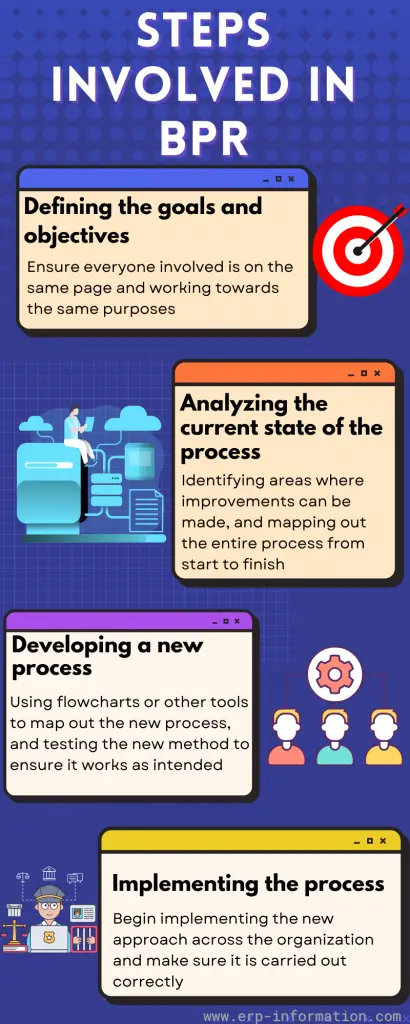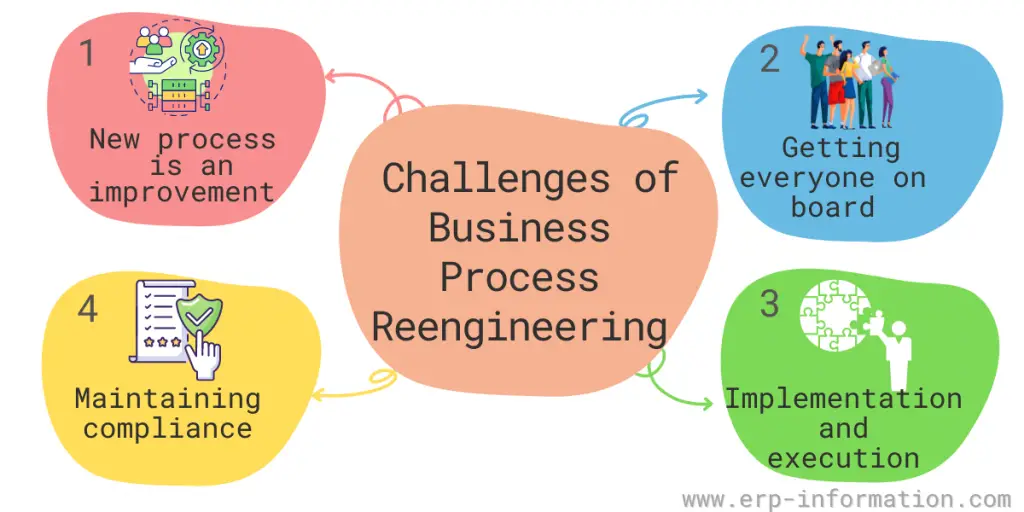What is business process reengineering? It cannot be easy to define because it is a broad term that encompasses many different concepts.
Generally speaking, business processes are analyzed and redesigned to improve efficiency and effectiveness.
This blog post will look at business process reengineering (BPR) with an example. We will also provide steps, principles, and associated benefits and challenges.
Business process reengineering definition
It is a management strategy aiming to make fundamental changes to how an organization works to improve its overall performance. It can involve changes to the organizational structure, how work is done, or even how products and services are delivered.
One of the critical goals of reengineering business processes is to optimize processes to be more efficient and effective. That often involves streamlining or simplifying tasks, eliminating unnecessary steps, and making better use of technology and resources.
Another goal may be introducing new processes better suited to the organization’s or its customers’ needs.
Business process reengineering example
One example is a company that outsources its call center operations. Rather than having employees within the company answer customer calls, the company contracts with an external call center provider who will handle all customer inquiries.
That can result in significant cost savings for the company and improved customer satisfaction levels due to the increased service provided by the call center provider.
Business process reengineering steps
Defining the goals and objectives
The first step is to clearly define the goals and objectives of the business reengineering project. That will help ensure everyone involved is on the same page and working towards the same purposes.
Some common goals of BPR projects include improving efficiency, reducing costs, good customer experience, and increasing revenues.
Analyzing the current state of the process
The next step includes studying how the process currently works, identifying areas where there are inefficiencies or problems, identifying areas where improvements can be made, and mapping out the entire process from start to finish.
Developing a new process
Once you understand the current process, it’s time to develop a new, improved strategy that addresses all identified issues.
That may involve brainstorming sessions with team members using flowcharts or other tools to map out the new process and testing the new method to ensure it works as intended.
Implementing the process
Once you have come up with a plan, next, it’s essential to test the new process to ensure that it is improved and meets the business’s and its customers’ needs.
If all looks good, you can begin implementing the new approach across the organization and make sure it is carried out correctly.
Fundamental principles
- Start with the completion in mind – Processes should be designed to achieve specific outcomes.
- Simplify and Streamline – Excessive complexity creates needless waste and can impede performance.
- Empower Employees – Give employees the tools and authority they need to carry out their tasks effectively.
- Continuous Improvement – Processes should be constantly evaluated and refined to ensure optimal performance.
Benefits
- Increased efficiency: One of the primary goals of reengineering processs in business is to improve efficiency and the use of resources. Business process redesign can lead to various benefits for the organization, such as reduced costs, improved productivity, and increased customer satisfaction.
- Improved Productivity: When processes are streamlined and simplified, employees ca freely focus on more productive tasks, leading to increased organizational output. This helps to efficient business process management.
- Reduced costs: By streamlining processes and increasing efficiency, business reengineering process can help to eliminate waste and save the organization money.
- Improved customer satisfaction: When processes are enhanced and made more efficient, it can lead to a better customer experience. Autometed processes helps for consistancy and better customer experience.
- Increased revenues: It can help enhance the organization’s bottom line by improving efficiency and reducing costs.
Challenges
- Ensuring that the new process is an improvement – It’s essential to test the new method to ensure that it meets the business’s and its customers’ needs. If it doesn’t, then it’s back to the drawing board.
- Getting everyone on board – Change can be difficult for some employees, so getting everyone on board with the new process is critical for its success.
- Implementation and execution – Ensuring the new process are implemented and followed correctly across the company can be daunting.
- Maintaining compliance – In some cases, business reengineering can require changes to existing systems or processes, leading to compliance issues.
FAQs
What is the role of business process reengineering in ERP?
BPR is the fundamental philosophy on which ERP systems are based. ERP systems are complex and often involve integrating many different applications and databases.
It can help streamline these processes, making them more efficient and effective. Additionally, it can help organizations better understand their business processes, leading to continual improvements. When implemented correctly, it can help to increase efficiency and optimize business operations.
What are the five best business process reengineering tools?
The reengineering tools are
– Bizagi
– ProcessMaker
– IBM Blueworks Live
– Nintex
– Oracle BPM Suite
Conclusion
Business process reengineering can be the best for organizations that streamline operations and improve efficiency. However, it’s vital to ensure that the new process is an improvement before implementing it across the organization.
Additionally, getting everyone on board with the new method is critical for its success. Finally, ensuring the new process is followed correctly can be daunting. But if done correctly, BPR can increase efficiency, project management, productivity, and satisfaction.


